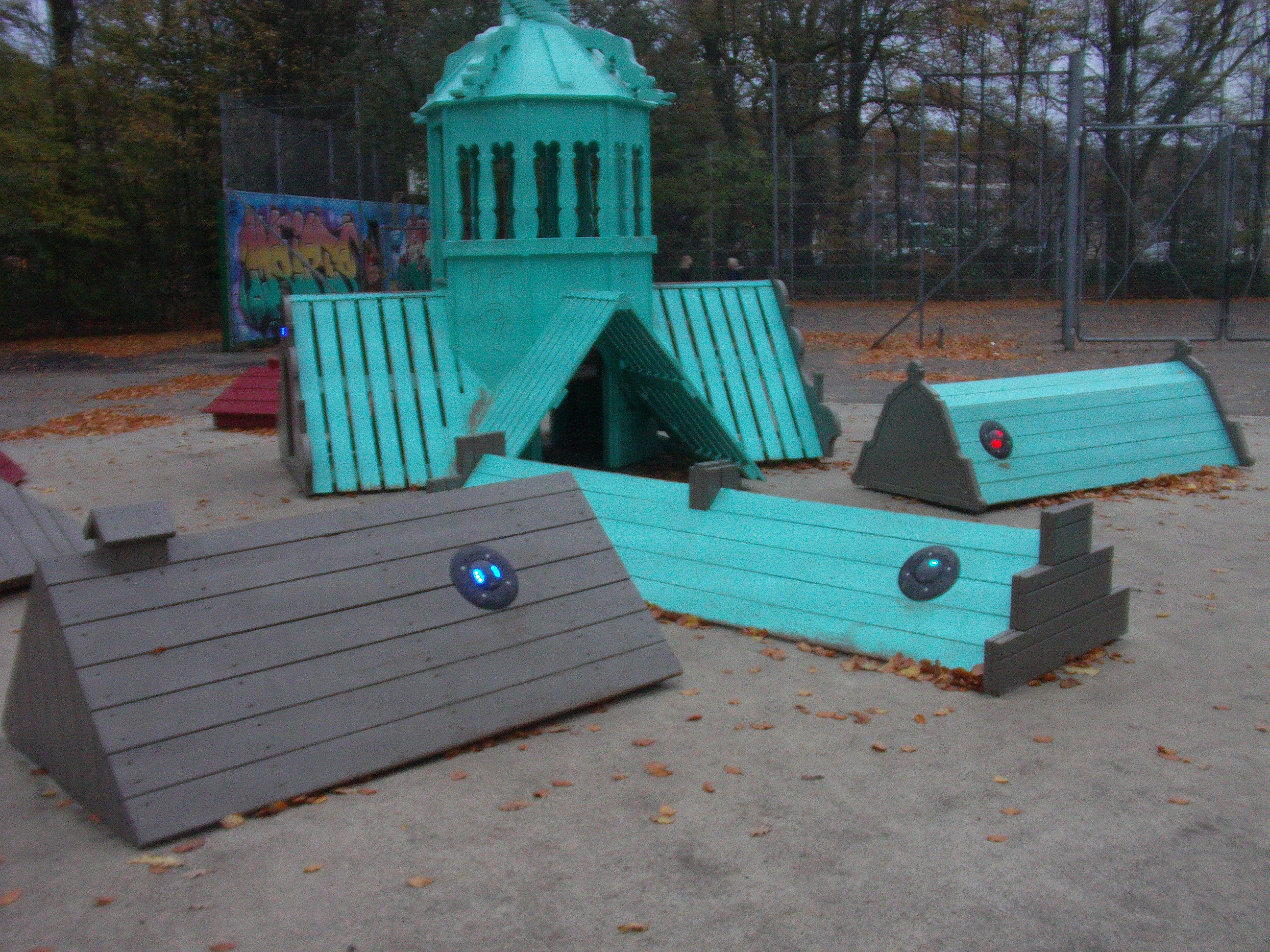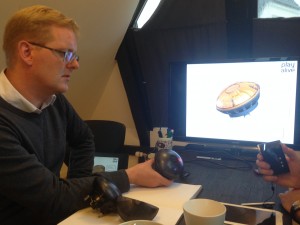This was written for our Play Sandbox journal back in November, and I forgot to put a copy here.
Tine and I are in Denmark to meet PlayAlive, a company that specialise in interactive technology for public and school playgrounds. They are based in Vejle, a little over two hours by train from Copenhagen.
Before heading to Vejle, we found an installation of PlayAlive’s “satellite” devices in a park in Copenhagen. The satellite is a robust and versatile object, once embedded in a surface it appears as a circular and convex plastic disc. Translucent, it catches the attention through the blinking of coloured LEDs that light up individually or in segments, or – less immediately – through sound.
The game we found (called something like ‘Rooftops’ – I will check the translation with Tine!), around 20 satellites were embedded in a collection of wooden play structures fashioned to resemble Copenhagen roofs and towers.
The game starts with a swift slap or kick to one of the satellites. The little circular ‘screens’ come to life with a necessarily simple, but effective, animation of flapping wings and audio files of bird calls – some in red, some blue. Players choose and colour and run around the structures finding, then touching or kicking their blue or red birds. Once one player has caught all their birds the level ends and each satellite displays the winning state with a fanfare and a display of the proportion of red to blue birds caught.
Our swings project will use the satellites quite differently – exploiting their motion-detecting and signal output capabilities rather than just their lights. However this game is a useful example of how a relatively simple play mechanic (search / capture / reward) can encourage and support various modes of play when left out in a public environment. We arrived at the playground in the fading light of an already murky grey day, but a few groups of young children and a handful of parent – child pairs passed through while we were there, stopping to play for a while. One mother and child, we think for the benefit of us researchers, played a level of the game in full, whereas other young children in small groups ran around catching birds without worrying about starting the game properly or paying any attention to the ‘score’ at the end. In fact they played ‘across’ levels, waiting for the (redundant) scoring mechanism and reset signals to finish before chasing again. Thus the game mechanic allows both ‘proper’ play and distracted or partial play. Or perhaps, if we had been able to observe for longer we might have seen the birds-lights incorporated into more spatially and temporally extensive imaginative play.

